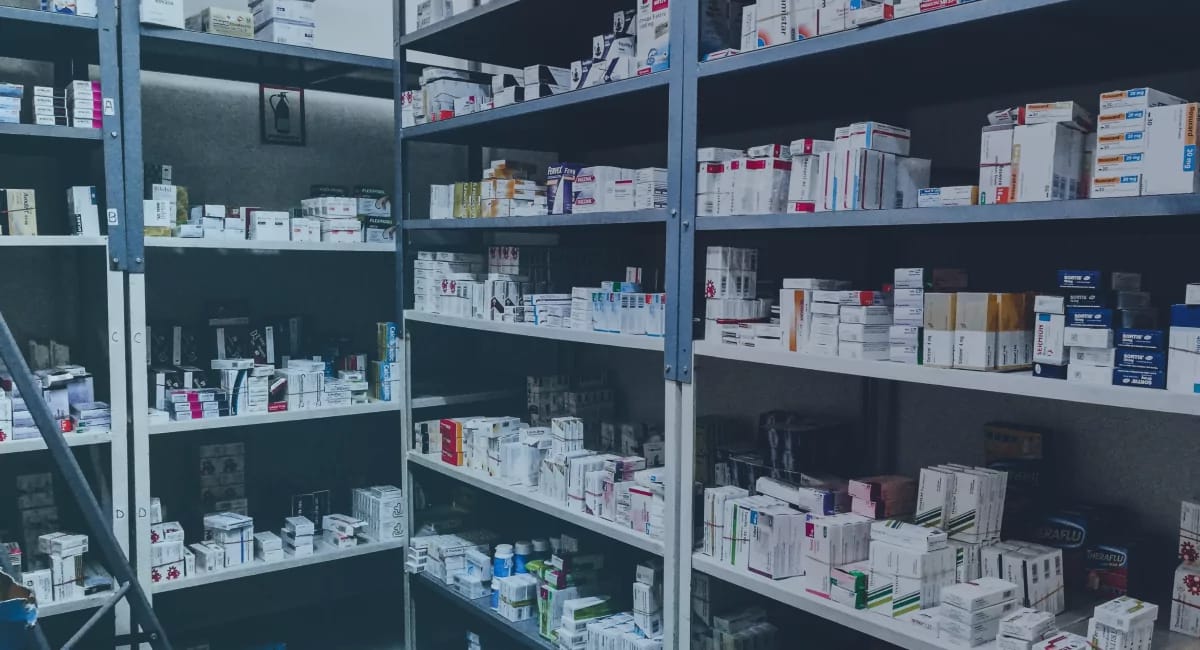Managing medical and pharmaceutical stocks is one of the most challenging challenges facing hospitals and health centers around the world. Given the sensitivity of stored materials, whether medicines, medical supplies, surgical instruments, or devices that require close monitoring, any error in managing these resources could lead to significant financial losses or even risks to patients' lives This is where ERP (Enterprise Resource Planning) comes into play. It has become an essential tool in the healthcare sector, helping to organize inventory, track medications, improve the supply chain, and ensure compliance with medical standards.
In this article, we will discuss in detail how to manage medical inventory and medicines using ERP systems, the most important advantages they provide, as well as the practical steps to successfully implement them within health institutions.

The importance of medical inventory management in health institutions
Medical inventory is unlike any other type of inventory. It includes highly sensitive items such as medications that require special temperatures, surgical supplies whose absence can affect patients' lives, and precision medical devices that must always be available. Therefore, managing medical inventory is a matter of life and death, not just an administrative process.
Many hospitals that relied on traditional methods such as paper tables or Excel files found themselves facing complex challenges such as counting errors, lost supplies, expired medications, or even the loss of the ability to track the actual consumption of different departments. These challenges prompted healthcare institutions to search for smarter solutions. The ideal solution was to adopt ERP systems that allow for immediate data consolidation and analysis Which raises the level of operational efficiency and ensures patient safety.
What is an ERP system in hospital management?
ERP, short for Enterprise Resource Planning, is an integrated software that aims to connect all of an organization's operations into a single platform. For hospitals, ERP enables financial management, human resource monitoring, medical operations organization, and, most importantly, medical inventory and medication management.
Through a central database, the ERP system is able to record every entry and exit of medical supplies, whether purchases, dispensing medications to patients, or resupply from suppliers. This integration enables the hospital to operate with high efficiency while minimizing human error.
The role of the ERP system in managing medical and pharmaceutical inventory
The ERP system has a strong ability to manage medical and drug inventory in an integrated manner, through:
1. Accurate tracking of medicines and supplies
Inventory tracking is one of the most important functions provided by the ERP system in the medical sector, as the system can know the available quantities of medicines and supplies at any time and in real time, which prevents sudden shortages or the accumulation of unnecessary quantities. The best ERP programs also allow setting a minimum and maximum inventory limit, to automatically alert the purchasing management when a reorder is needed, ensuring that essential medicines are always available without interruption.
2. Managing drug expiration dates
One of the most significant challenges facing pharmacies and hospitals is dealing with medication expiration dates. In this regard, the ERP system provides a precise mechanism for tracking these dates according to the FEFO (First Expired, First Out) principle, i.e., dispensing medications that are closest to expiration first. This significantly reduces waste resulting from stock expiration and maintains the quality of products provided to patients, which enhances the efficiency of medical resource management.
3. Supply chain improvement
The ERP system plays an important role in linking medical inventory to the purchasing department and suppliers. When the quantity of a particular item reaches a minimum, the ERP accounting software creates an automatic purchase order to ensure its continued availability. The ERP system also facilitates managing contracts with suppliers, comparing prices, and tracking delivery dates. This integration enhances the speed of response to hospital needs and reduces the possibility of supply delays.
4. Reducing human errors and controlling processes
One of the most prominent features of the ERP system in drug management is that it reduces reliance on manual data entry, as technologies such as barcodes and RFID are used to accurately record the entry and exit of drugs, and this reduces common human errors in recording quantities or dispensing the drug, and ensures that the correct treatment reaches the right patient at the right time.
5. Analytical reports
The ERP system provides detailed reports and statistics that help medical management understand consumption patterns and identify the most commonly used items. The ERP corporate management software also enables analysis of future trends and the development of strategic resource management plans. This comprehensive, data-driven vision helps hospitals and pharmacies make accurate decisions and balance actual demand with available inventory.
6. Adherence to health standards and improving service quality
The medical sector is subject to strict standards and regulations related to the storage and dispensing of medications. The ERP system facilitates compliance with these standards by providing accurate and traceable records, which enhances trust between the institution and the patient. The ERP human resources system also contributes to improving the quality of medical services by reducing errors and ensuring the constant availability of treatment, which positively impacts patient satisfaction and safety.
7. Integration with other medical systems
An important aspect of the ERP system's role is its integration with electronic medical record (EMR) systems, where a doctor's prescription can be linked to medication dispensing directly from the warehouse, reducing the chances of dispensing non-compliant medications and accelerating the service provided to the patient. This integration creates an interconnected and intelligent system that supports operational efficiency and enhances the patient experience.
Conclusion:
It can be said that the ERP system represents a qualitative shift in the management of the medical and pharmaceutical system. It is not just an inventory management program, but rather an integrated system that links procurement, inventory, medical records, and analytics, to ensure that healthcare organizations have effective management based on accuracy and transparency. Thanks to ERP, hospitals and pharmacies can achieve financial savings, reduce waste, enhance service quality, and, most importantly, ensure patient safety.
Other topics:
Fekrait’s Software for Restaurant and Coffee Shops Management
Fixed Assets And Custody Management System
reference:
1. << Management Accounting>>, businessnewsdaily
2. <<Sage Business Cloud Accounting Review and Pricing>>, business

Add New Comment